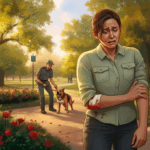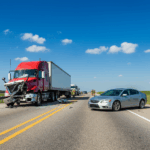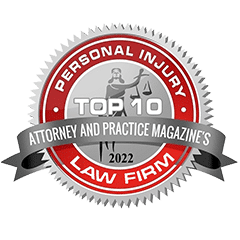Every year, thousands of Texans experience the aftermath of car or truck wrecks. Whether it’s a minor fender bender or a major highway crash, knowing how to handle the situation can make a world of difference—especially if you’re considering filing a personal injury claim.
One of the most critical steps after an accident? Proper documentation. The evidence you gather in those moments can significantly affect the success of your case and your legal rights.
Here are the three most important facts to document after a car or truck accident to help you protect yourself and secure a strong legal outcome.
1. Capture the Scene
It’s easy to feel overwhelmed in the moments following an accident, but documenting the scene is a step you can’t afford to miss. Think of it as piecing together a story—the more details you provide, the stronger your claim will be.
Why It Matters
Accident scenes quickly change. Vehicles are towed, injuries heal, and evidence can disappear with time. By taking clear photographs and videos, you’re preserving an accurate snapshot of what happened.
What to Document
Use this quick checklist to ensure you capture all crucial details at the scene:
- Vehicle Damage: Take detailed photos of dents, scratches, broken windows, and any other visible damage to all vehicles involved.
- License Plates: Include close-up shots of license plates for identification.
- Road Conditions: Document skid marks, debris, potholes, or road signs that may have contributed to the accident.
- Traffic Signals: Take pictures of relevant traffic signals, stop signs, or yield signs to establish where and how the wreck occurred.
- Weather Conditions: Was it raining, foggy, or sunny? A quick note or snapshot of the sky can provide valuable context.
- Scene Layout: Capture wide-angle shots to showcase vehicle positions, lanes, and nearby landmarks.
Pro Tip
Use your smartphone! Most phones today have high-quality cameras. Include timestamps if possible—some phones do this automatically, and it adds credibility to your evidence.
2. Collect Witness Information
Eyewitnesses can play a pivotal role in strengthening your case. Aside from your own account, third-party perspectives can validate your story and rule out conflicting testimonies from the other drivers involved.
Why It Matters
Witness statements are unbiased and can carry significant weight during legal proceedings or insurance disputes. Having credible witnesses can help establish fault or corroborate the sequence of events.
How to Collect Witness Information
Here’s how to approach witnesses effectively:
- Secure Names and Contact Information: Politely ask for their full name, phone number, and email address.
- Take Notes on What They Saw: Ask for a brief overview of what they witnessed. You can record their statement on your phone (with their permission) or jot down notes.
- Clarify Key Details:
-
-
- What time did the witness notice the crash?
- Where was the witness standing or driving when it happened?
- Did they notice the behavior of either driver before the accident?
-
What if No Witnesses Stop?
If no third parties are available, check surrounding businesses or homes for security cameras. Nearby cameras might have captured footage that could serve as alternative support for your claim.
Pro Tip
Always stay polite and professional when engaging witnesses. You want their cooperation, not a conflict in an already tense situation.
3. Seek Prompt Medical Attention
Even if your injuries seem minor at the moment, it’s vital to seek medical care as soon as possible. Many injuries, like whiplash or internal injuries, may not show symptoms immediately but can worsen over time.
Why It Matters
Medical records are critical for linking your injuries to the accident. Without these records, an insurance adjuster or opposing party might argue that your injuries weren’t caused by the wreck. Seeking prompt care also demonstrates that you took the situation seriously.
What to Document
Keep detailed records of:
- Emergency Room Visits: Save copies of hospital and clinic records.
- Medical Bills: Include itemized bills for treatments, prescriptions, or any physical therapy services.
- Doctor’s Notes: Obtain written reports detailing your diagnosis, treatments prescribed, and any recommended time off work.
- Pain Journal: Consider keeping a daily log of any pain or symptoms you experience and how they affect your daily life.
Pro Tip
Some Texas laws require proof of mitigating damages. This means neglecting to seek medical care after the accident could harm your chances in court by suggesting you didn’t consider your injuries severe.
Protect Yourself After a Wreck
The aftermath of a car or truck wreck can be stressful, but taking the time to properly document the scene, gather witness information, and seek medical attention will go a long way in protecting your legal rights. These three steps create a strong foundation that can help you successfully file an insurance claim or pursue a personal injury case.
If you were involved in an accident in Texas and need legal advice, it’s always a good idea to consult with a qualified attorney. A legal expert can guide you through the complexities of personal injury law and ensure that nothing is overlooked.
Take Action Now
Want to stay informed with more valuable legal insights? Subscribe to our newsletter, and don’t forget to share this blog post with friends and family—it could make all the difference for someone in need.





























